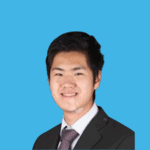On Monday, a Russian anti-satellite (ASAT) missile test created a cloud of debris that threatened the International Space Station. The incident is a reminder that space is an increasingly contested and militarized domain.
Such tests, which involve missiles slamming into satellites and destroying them with kinetic energy, are dangerous because they create a lot of debris that moves incredibly fast, Most “space junk” moves at 18,000 mph, seven times faster than a bullet, and at such high speeds even a small piece can damage or destroy satellites and spacecraft. This isn’t a short-lived problem as debris can stay in orbit for quite a while; in 2007 a Chinese ASAT test created thousands of pieces of debris and nine years later most of it was still up there.
The Russian ASAT test created 1,500 pieces of trackable debris and there is certainly more that is undetected. The inhabitants of the ISS, including two Russian cosmonauts, were forced to seek shelter in their docked capsules. Why the Russians would conduct an ASAT test in such a popular orbit and put their own cosmonauts at risk is unclear, and it’s left experts somewhat baffled.
“This seems like a really careless experiment when they’ve already proven that they have this capability,” said Makena Young, an Associate Fellow with the Aerospace Security Project at the Center for Strategic and International Studies, in an interview with the Signal. “Everyone knows that Russia has these space capabilities and these counter-space weapons, this is pretty reckless especially considering the ISS.”
US officials have expressed similar sentiments, with the Pentagon, State Department, and NASA all condemning the test. A Pentagon spokesman also stated that the Russians did not notify the United States about the test ahead of time.
Nations have been developing ASAT capabilities for some time and it seems increasingly probable that space combat will be a critical component of future warfare. Modern militaries have grown very reliant on space, using satellites for numerous critical tasks from intelligence gathering to communications. A nation that can knock out enemy space assets while protecting their own would have a major military advantage on Earth. Indeed, the United States recently created the Space Force for this reason, while Russia has its own Space Forces that operate as a sub-branch of the Russian Aerospace Forces. Likewise, China has established the People’s Liberation Army Strategic Support Force to handle space as well as cyber and electronic warfare.
Yet there are numerous ways to neutralize satellites that don’t involve creating lots of debris, from cyber and electronic warfare to directed energy weapons such as lasers and high-powered microwaves. Such capabilities are certainly not beyond Russia’s means, so why they resorted to testing kinetic ASATs is unclear but it may have to do with the attention such tests bring. “It’s really the only thing that people who aren’t keeping up on all the nuances of satellites in space can really point to and say, ‘that’s an attack, that’s a capability that’s very dangerous,'” said Young, though she added that “it’s a lot more work and a lot more dangerous to destroy a satellite than dozens of other counter-space weapons.”
In light of recent ASAT tests, which also include a 2019 test by India, experts are calling for the establishment of international norms regarding space. There are few rules of the road governing space that nations have agreed to abide by, with Chief of Space Operations Gen. John W. “Jay” Raymond calling space the “wild, wild west.” One proposal is a ban on this kind of ASAT testing. “I think an ASAT test ban is a great place to start,” said Young. “These tests are just really irresponsible, they put everyone at risk.”
However, space junk will remain a serious problem even if kinetic ASAT tests are completely eliminated. It’s already been a concern that experts have been warning about for some time; for example, the issue was brought up during the confirmation hearing of Air Force Undersecretary Gina Ortiz Jones. As space gets more congested with the addition of large satellite constellations like Starlink, the risk of collisions becomes greater. There’s even the risk of a cascading effect known as Kessler Syndrome, where collisions create debris that create more collisions and more debris (this was the plot of the film Gravity).
Companies are already working on solutions to the space debris problem, but they can create complications of their own. “New technologies that people are testing to clean up this debris could also technically be weapons,” said Young. “If you have a net that you cast out, and it catches a piece of debris, who’s to say you can’t do that to another satellite and capture that satellite? It’s another conversation, about defining what is a weapon in space, making these norms of what is okay and what isn’t.”
Photo: Ronald C. Wittman / Wikimedia Commons
William serves as the Washington Correspondent for the Texas Signal, where he primarily writes about Congress and other federal issues that affect Texas. A graduate of Colorado College, William has worked on Democratic campaigns in Texas, Colorado, and North Carolina. He is an internet meme expert.





